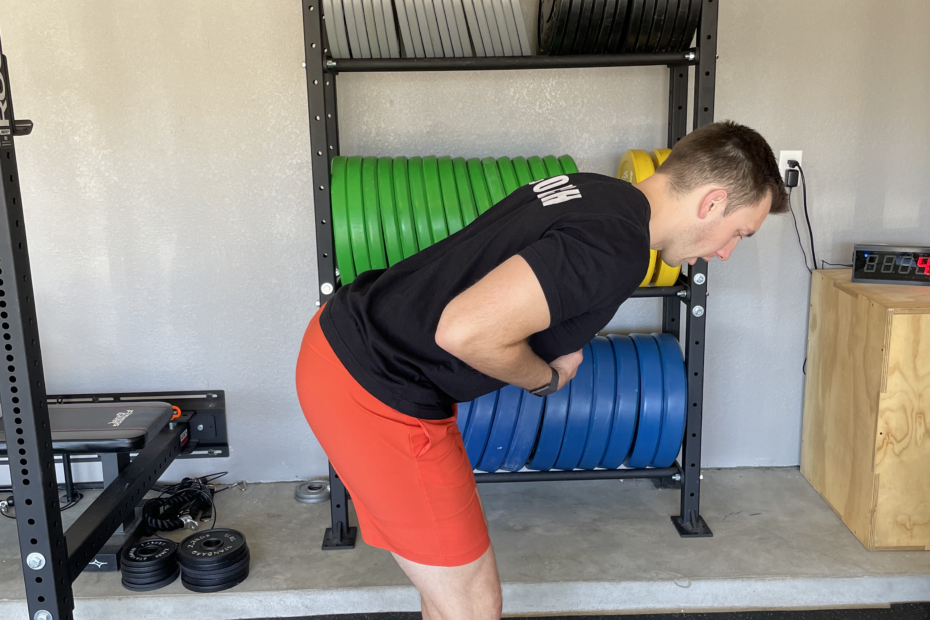As a physical therapist and personal trainer I have seen all different types of movers from the ones that make me jealous to the ones I am not sure how they came up with that. No matter how you move or how much experience you have in fitness the number 1 movement I see almost everyone struggle with is the hip hinge. This is a simple movement, all you have to do is move your hips back as far as possible without bending your knees. Despite the simplicity of this movement time and again I see people struggle with it in isolation which makes it worse when they need to use it in combination with other movements. Let’s talk about why this movement is so important.
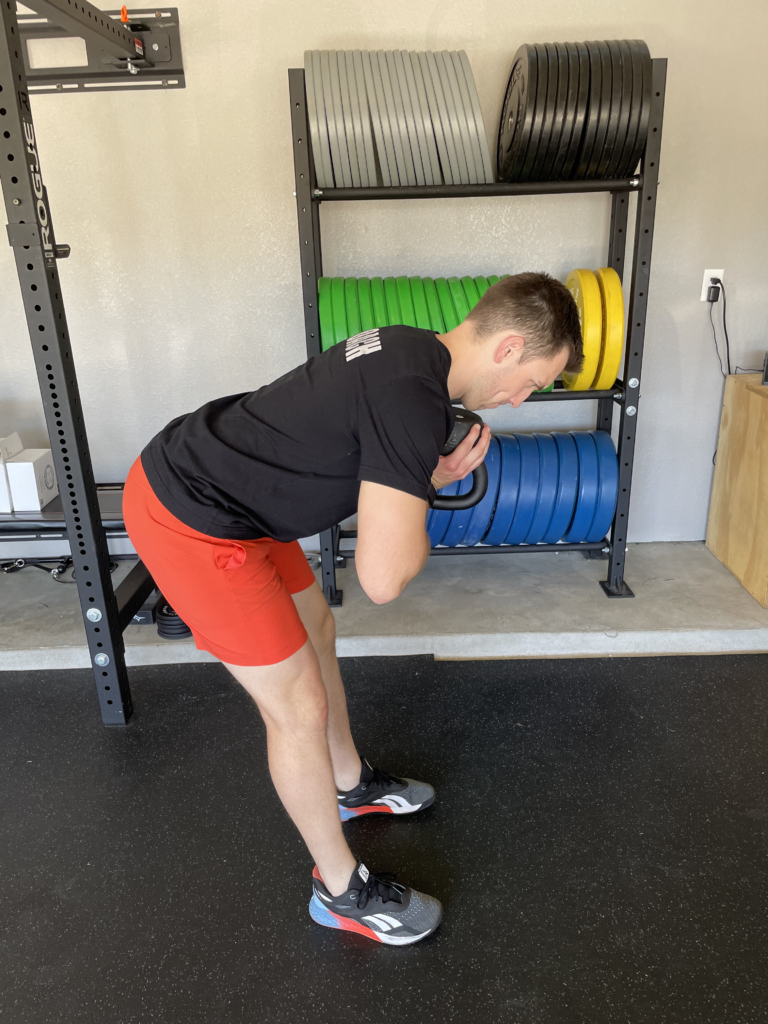
The hip hinge is an important movement to master because it is the basis of so many other movements from squats, and deadlifts, to overhead presses and sit-ups. These are all not only movements you will use in the gym but also movements to keep you healthy throughout life. You need to be able to squat to stand from a chair or toilet, you need to be able to pick up objects from the floor or overhead and you need to be able to sit up out of bed without requiring a hoist. If you want to live a long life, not in a nursing home, and be able to spend time with family and friends, you need to be able to do all those movements independently. Now you see how this movement transfers over to all movements in the gym and life, let’s talk about how to perform properly.
Looking at the pictures you can see we start with what we call neutral spine meaning my core is engaged and I am not arching at my low back or rounding my back forward. This will look a little different for every person but as long as your core is engaged as if you were going to be punched in the stomach you are probably doing it correctly. Next, we make sure our feet are planted into the ground meaning I feel my big toe, little toe, and heel on the ground without my arches touching the ground. Now it is time to move, send your hips back as far as possible without falling down. Your chest should move towards the ground but the core should not break. Then we squeeze our butt to return to standing. Think about being a drinking bird. If you do not know what I mean google it and you will see what I am talking about. The bird is a perfect example of the movement you should create with your body so keep that in mind as you move. If you are a bird, I am a bird for those Notebook fans out there.
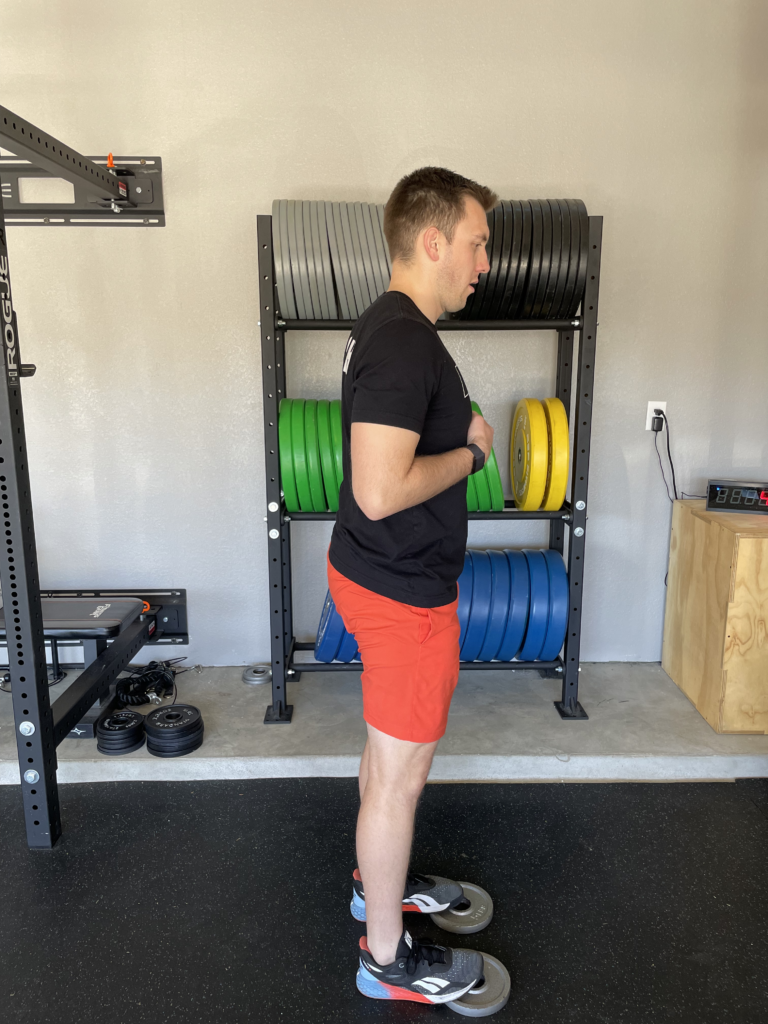
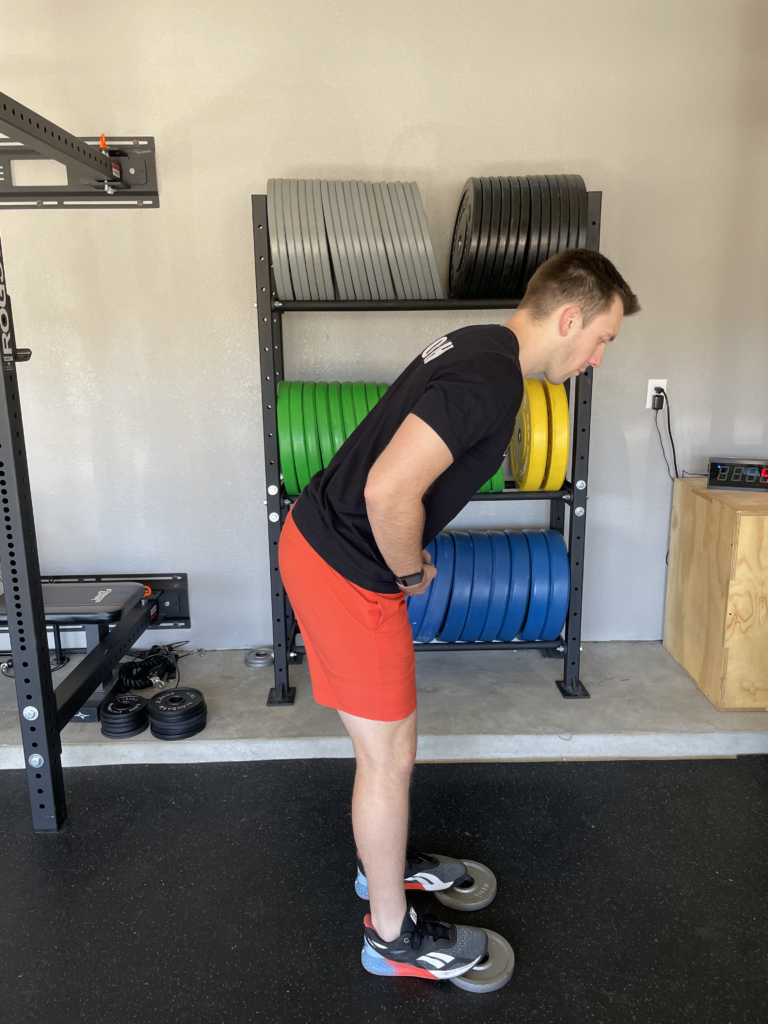
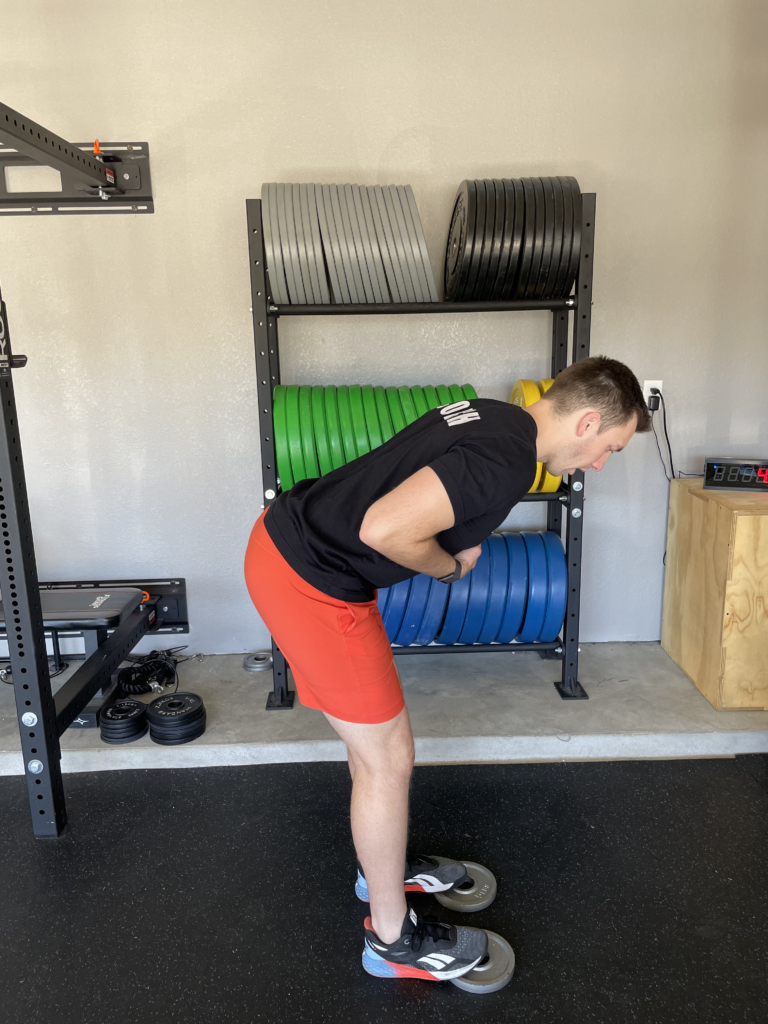
The biggest fault I normally see is not moving the hips far enough back because it is a new movement, your hips are too stiff and you do not have positional awareness. Try putting 5 lbs weights or towels under your toes to keep weight more in heels to help push butt back, like pictured to the right.
The next biggest fault is flexing the lower back or extending the lower back. This one is crucial and why a lot of people end up with low back pain. The core needs to be engaged the whole time and the trunk should be moving in one piece. If you have difficulty with this try using a PVC pipe or long foam roller and make sure you are pressing your lower back into it while maintaining your head, upper back, and butt on it as well. Then move in one piece. See picture.
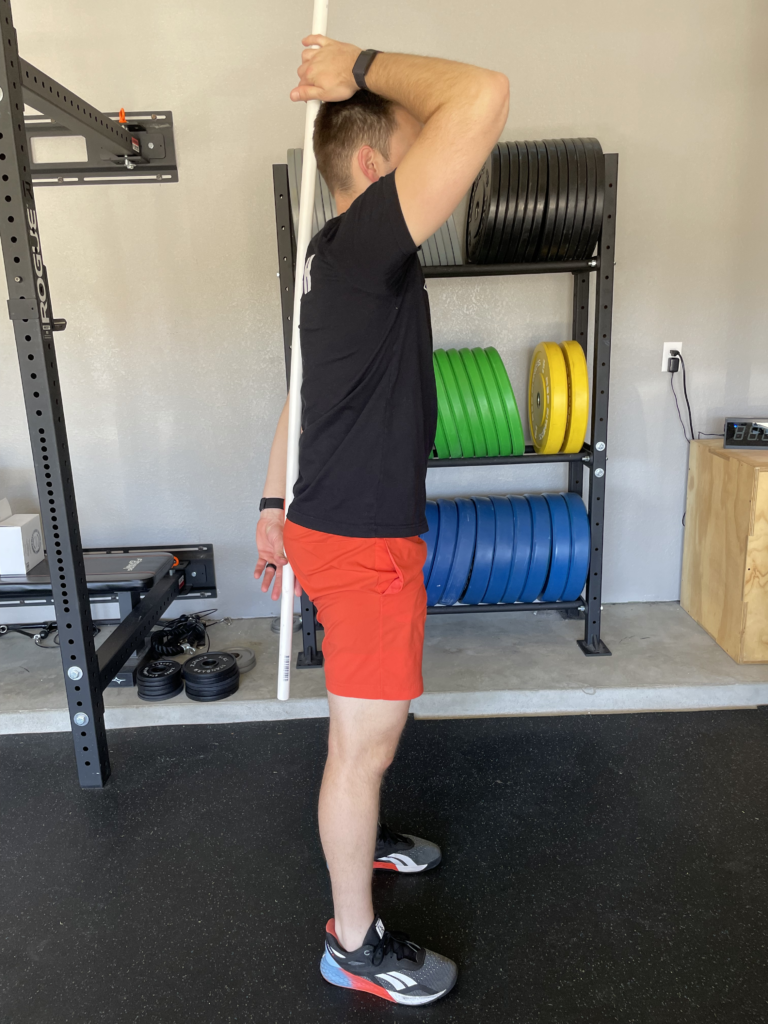

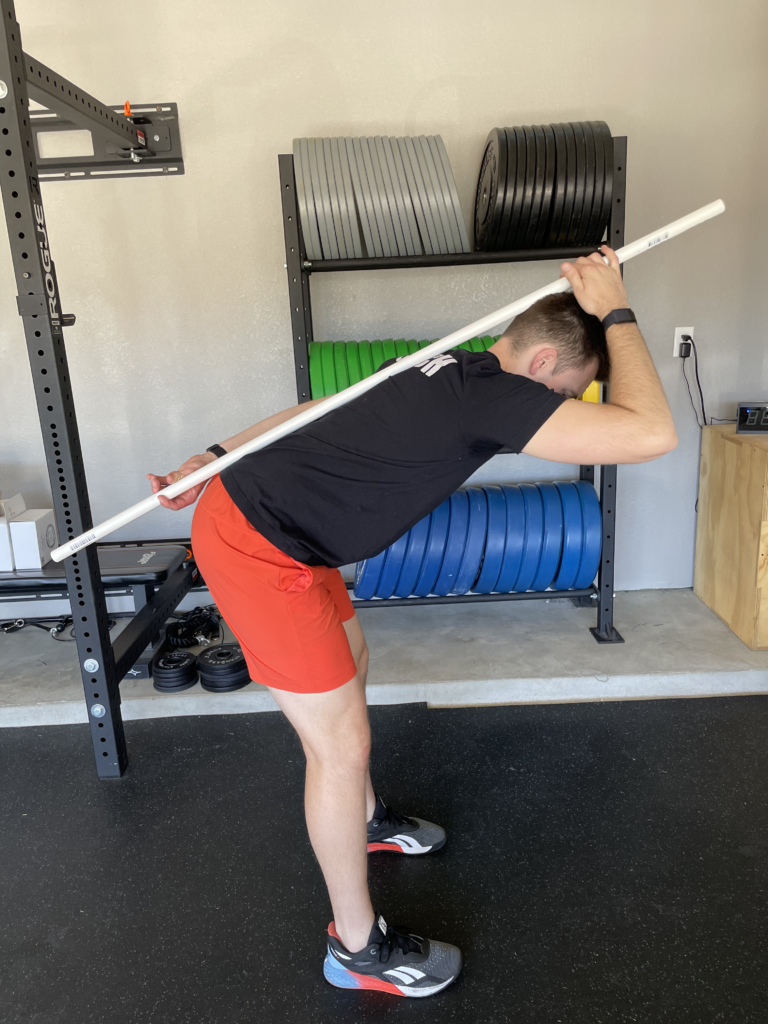
This movement can also be made more difficult by adding weight, adding speed like KB swings, bands to add resistance to hips. It can also be regressed to kneeling to decrease the demand but the same principles apply.
Try starting with 2 sets of 15-20 reps with no weight to get the pattern down then add another set to total of 45-50 reps before adding weight or difficulty. After you practice the movement try squatting or deadlifting and apply the same principles. Again this is the basis of many other movements so it is important to move properly before trying to add complexity with more movement. Proper squat and deadlift mechanics we will save for another blog but getting the basics down should help out all other movements.
by
Cody Luttrell, Doctor of Physical Therapy
